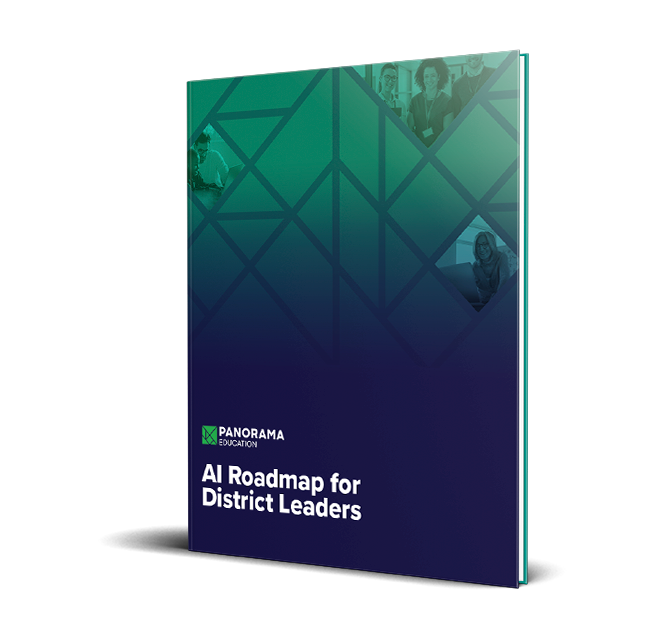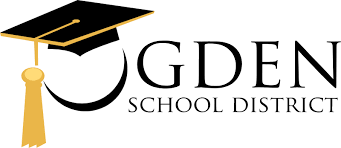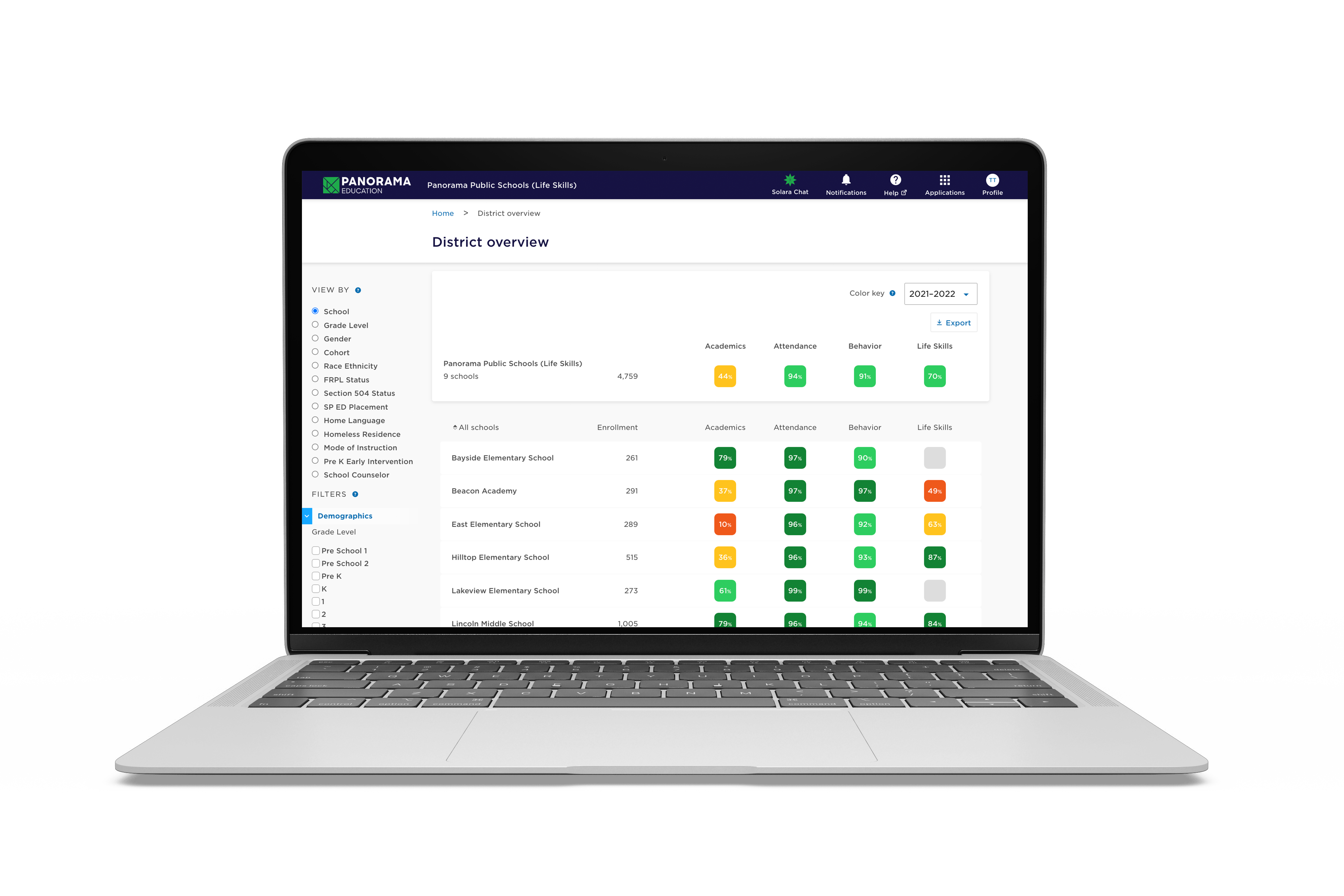-
Solutions
-
By District Priority
-
-
Products
-
-
Panorama Surveys and EngagementStudent, Family, and Staff Surveys
-
Student SurveysCapture student voice to inform decision-making
-
 Family SurveysIncrease family engagement and understand community priorities
Family SurveysIncrease family engagement and understand community priorities -
 Teacher and Staff SurveysSupport and retain your best educators with staff feedback
Teacher and Staff SurveysSupport and retain your best educators with staff feedback -
 Check-InsGain real-time insights into student well-being and learning with quick, recurring surveys
Check-InsGain real-time insights into student well-being and learning with quick, recurring surveys
-
-
-
-
Resources
-
Featured Resource

AI Roadmap for District Leaders
100+ prompts, a buyer’s guide, and a rollout plan—everything you need to lead with AI.
-
Find Your State
-
-
Alabama
-
Alaska
-
Arizona
-
Arkansas
-
California
-
Colorado
-
Connecticut
-
Delaware
-
Florida
-
Georgia
-
Hawaii
-
Idaho
-
Illinois
-
Indiana
-
Iowa
-
Kansas
-
Kentucky
-
Louisiana
-
Maine
-
Maryland
-
Massachusetts
-
Michigan
-
Minnesota
-
Mississippi
-
Missouri
-
Montana
-
Nebraska
-
Nevada
-
New Hampshire
-
New Jersey
-
New Mexico
-
New York
-
North Carolina
-
North Dakota
-
Ohio
-
Oklahoma
-
Oregon
-
Pennsylvania
-
Rhode Island
-
South Carolina
-
South Dakota
-
Tennessee
-
Texas
-
Utah
-
Vermont
-
Virginia
-
Washington
-
West Virginia
-
Wisconsin
-
Wyoming
-
-
-
About Us
-
Impact
-
Get in Touch
-
Ogden School District
How Ogden School District is building and scaling MTSS from the ground up to support every student
For educators in Ogden School District, the effective use of a multi-tiered system of supports (MTSS) is central to their mission of maximizing educational opportunities for all students.
Located 30 miles north of Salt Lake City at the foot of the Wasatch Mountain Range, Ogden School District serves 12,300 students in an urban environment. The nearby peaks could very well symbolize both the towering challenges and goals of the district. Nearly eight out of 10 students receive free or reduced-price lunch—some of the highest rates in Utah—and schools face high instances of chronic absenteeism, high-school dropouts, teenage pregnancy, and suicide.
Despite these odds, by 2020, the district strives to achieve an 88 percent graduation rate (up 20 percentage points) and an on-track literacy rate of 50 percent (up 15 percentage points).
“Many of our students come with those inherent risk factors of poverty, but I believe that our teachers are uniquely equipped to help our students.”
Chad Carpenter
Assistant Superintendent of Student Advocacy Services
That’s why, over the last three years, Ogden School District has invested in building and scaling a district-wide MTSS. Today, the district is well on its way toward supporting the needs of each and every student system-wide through the use of Panorama's MTSS software platform and professional development for educators.

Location:
Ogden, Utah, a city located 30 miles north of Salt Lake City at the foot of the Wasatch Mountains
About:
Serves 12,300 students, 90% percent of which are students of color and 88% percent live in poverty, across 20 schools
Panorama Products:
Pt. 1
Getting Started with MTSS
In years past, Ogden’s district leaders had been using many sources of data to understand student progress and drive decisions. Yet, district leaders still saw gaps in behavior and achievement among groups of students. Nearly 25 percent of students were chronically absent in 2015, mental health and behavioral issues required urgent intervention, and achievement gaps between student groups persisted.
“We looked a little deeper at the top 32 students who had an office referral for disciplinary reasons in the ninth grade. They had a dropout rate between 43 and 50 percent,” says Chad Carpenter, assistant superintendent of student advocacy services. “While we've been a very data-driven school system, we were using data as an autopsy as opposed to a diagnostic."
"We have since tried to flip that narrative and look at data as a way to drive outcomes—whether it's instruction, or building relationships with students, or utilizing our early warning system in order to be more purposeful in our interventions,” says Carpenter.
“It used to take me two to three days to pull the data across attendance, behavior, and grades with spreadsheets. It now takes minutes using the Panorama system.”
Nichole Goodliffe
Assistant Principal, Mound Fort Junior High
Recognizing the need to proactively address student needs, Carpenter and his team turned their focus to developing system-wide intervention practices within an MTSS framework. As part of this effort, they decided to implement a new early warning system and student surveys program with Panorama.
By connecting to key data systems—including the Aspire student information system, Educator’s Handbook for behavior records, and academic assessments like DIBELS and i-Ready—Panorama Student Success provides one place for educators to gain a complete picture of each student’s progress and manage interventions. Educators can access real-time dashboards that allow for a deeper drill-down into each student's attendance, coursework, assessments, behavior, and student voice data.
This new visibility into the status of interventions across grade levels, schools, and the entire district has been critical in enhancing Ogden’s MTSS practices. School and district leaders can now make more data-driven decisions, collaborate on student support plans, and progress monitor the effectiveness of their tiered support system.
.png)
Pt. 2
MTSS in Action in Ogden
To enhance their MTSS interventions, the district created student support teams at each school site—known as Child Assistance Teams (ChATs)—to mobilize around at-risk students. Made up of principals, counselors, and academic and behavior interventions, the ChAT meets weekly to review relevant data, identify students in need of Tier 2 supports, and ensure that interventions are carried out with fidelity.
Each member prepares for meetings by reviewing the academic, behavior, attendance, and life skills data in Panorama to identify at-risk students. They exit each meeting with intervention plans and next steps for every at-risk student.
Nichole Goodliffe, assistant principal at Mound Fort Junior High, shares how she identifies students for “achievement club,” a group intervention for at-risk eighth and ninth graders who need extra support on their path to graduation:
"Prior to Panorama, it used to take me two to three days to pull the data across attendance, behavior, and grades with spreadsheets. It now takes minutes using the Panorama system. Our student support teams meet weekly and can review our data together while monitoring the progress of our interventions, recording notes daily, and seeing what interventions have been completed for students with other staff in the building."
Valeria Lopez, a behavior interventionist with the district, saw the impact firsthand with one student: “This one student, he dropped out last year and decided that school was not going to be for him. But being able to look at the SEL for him, did have a positive impact for me to know what was going to be my next step and how I was going to help him reach his goal. And so now, not only did he graduate, but he graduated early. And that is a big success. Being there with him and his parents, celebrating that day with him, it meant the world to them.”
Administrators at Ogden also decided to deepen their focus on a set of predetermined Tier 2 interventions. Their district-wide Tier 2 intervention menu includes four interventions that staff are heavily trained to implement:
- 2x10 Relationship Building: Connect with a student for two minutes per day, 10 days in a row. These conversations should focus on relationship building, and must be about anything but school.
- Preventative Problem-Solving Plan (3Ps): Work with the student to identify the problem and talk through a solution.
- Goal-Setting: Check in with the student around a goal; more teacher-directed than the 3Ps, but still based on what the student has identified as the problem. ("Today we're working on staying in our seat. Do you think you could sit in your seat for 80 percent of the time?)
- Check In, Check Out (CICO): This is the most time-intensive intervention; review goals with the student every morning and collect data in 30-minute increments.
By implementing consistent MTSS practices and streamlining access to important data about at-risk students, Ogden’s ChATs are becoming increasingly proactive to students’ needs. Most importantly, the district is making progress on key challenges like chronic absenteeism and behavioral issues, while gaining ground in providing equitable and excellent academic experiences for their students.

Key Results
Established system-wide MTSS practices
School sites across the district have access to comprehensive, shared MTSS supports that include data collection systems, intervention menus, team structures, and professional development.
Acted on early warning indicators aligned to best practices
District leaders equipped school teams with early warning indicators aligned to the latest research to improve efficacy and consistency.
Tracked interventions with increased fidelity
Educators can now easily log and track student interventions, and administrators can monitor the success of their multi-tiered system of supports (MTSS).
Aligned measurements to strategic goals and beliefs
With measurements that align to its five-year strategic goals, the district has created a sustainable, coherent system for change.
Gained time by streamlining access to data
Student support team members save time by monitoring data across academics, behavior, attendance, and more in a central place to save time and can now provide more proactive student supports.
Delivered actionable life skills data for educators
Teachers and counselors received access to life skills data for their students, allowing for individualized support both inside and outside of the classroom.
Learn more about Panorama for your school or district
Get a free demo of Panorama or explore our resources for educators.
Take a tour of Panorama
Get insights with a technology platform that supports student success
Schedule a demo with our team or give us a call at (617) 356-8123

Schedule a demo for your school or district:
